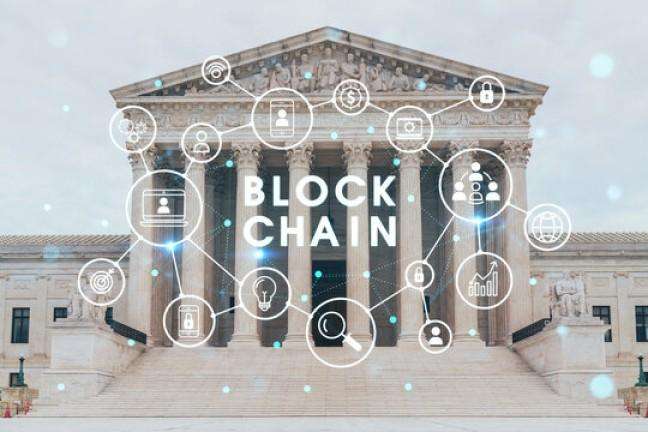In recent years, the world of blockchain technology has rapidly evolved, with new innovations and solutions emerging regularly. One such advancement is the “Actions Blockchain,” a concept that, although relatively new, promises to reshape how decentralized applications (dApps) and blockchain projects operate. In this article, I will provide an in-depth analysis of the Actions Blockchain, its workings, real-world applications, and potential future implications. By the end, you’ll have a thorough understanding of this groundbreaking technology and how it might affect various industries.
Table of Contents
What is the Actions Blockchain?
The Actions Blockchain, at its core, is a decentralized and distributed blockchain protocol designed to handle specific actions within a network. Unlike conventional blockchains that primarily focus on transactions, the Actions Blockchain goes a step further by managing and recording actions in the system. These actions could be anything from user interactions to smart contract executions and beyond. It is designed to allow different types of data and actions to be validated, processed, and stored securely and immutably.
At a high level, the Actions Blockchain operates much like any other blockchain in terms of blocks and chains, but it focuses on “actions” rather than just monetary transactions. This shift in focus opens up a multitude of possibilities in how data is processed and interacted with in the blockchain world.
How Does the Actions Blockchain Work?
The process of how the Actions Blockchain works can be broken down into several key components:
- Action-based Transactions: Instead of focusing solely on financial transactions like most blockchains, the Actions Blockchain focuses on actions. These actions are validated and recorded on the blockchain just like traditional transactions but often represent something beyond just money being transferred. For example, a user could trigger an action to vote on a governance proposal or execute a contract.
- Decentralization: Just like other blockchain systems, the Actions Blockchain is decentralized. There is no central authority that governs or controls the actions recorded on the blockchain. This ensures transparency, security, and reliability.
- Smart Contracts: Smart contracts are an integral part of the Actions Blockchain. These self-executing contracts are triggered by predefined actions, such as a vote being cast or an asset being transferred. The smart contract ensures that actions are executed in a way that is secure, transparent, and irreversible.
- Validation Mechanism: A consensus mechanism is used to validate actions and ensure they are correctly recorded on the blockchain. This could range from Proof of Stake (PoS) to Proof of Work (PoW) or any other consensus protocol that ensures the network’s integrity.
- Scalability: One of the main goals of the Actions Blockchain is to improve scalability. By focusing on actions rather than traditional transactions, the network can handle higher volumes of data and actions without the bottlenecks typically associated with financial blockchains.
Comparison: Actions Blockchain vs. Traditional Blockchains
To better understand the significance of the Actions Blockchain, let’s compare it to traditional blockchains like Bitcoin and Ethereum. I’ll highlight some key differences in how each blockchain handles data and transactions.
| Feature | Traditional Blockchain (Bitcoin/Ethereum) | Actions Blockchain |
|---|---|---|
| Primary Focus | Monetary transactions | Actions (voting, contract executions, etc.) |
| Use Cases | Peer-to-peer currency, decentralized finance (DeFi) | Decentralized applications (dApps), smart contracts, governance actions |
| Scalability | Limited by block size and transaction speed | Improved scalability through action-based validation |
| Consensus Mechanism | Proof of Work, Proof of Stake | Can vary (PoS, PoW, or others) |
| Smart Contracts | Limited (Ethereum) | Fully integrated and action-specific |
This table clearly shows that while traditional blockchains like Bitcoin and Ethereum focus on transactions, the Actions Blockchain broadens the scope to handle various actions, offering potential for more diverse applications in areas such as governance and contract execution.
Real-World Applications of the Actions Blockchain
The versatility of the Actions Blockchain opens up numerous possibilities for real-world applications. Let me highlight a few examples:
- Decentralized Governance: In decentralized governance systems, the Actions Blockchain can be used to record voting actions. These could include decisions on protocol upgrades, funding allocations, or other key decisions made by a decentralized community. By using blockchain to record votes, we ensure transparency and immutability, preventing tampering or fraud.
- Decentralized Applications (dApps): The Actions Blockchain can be used to power various dApps that rely on actions to trigger smart contracts. For instance, a dApp in the insurance industry could automatically execute a payout when certain conditions are met, such as a user reporting a car accident or a flight delay.
- Supply Chain Tracking: Blockchain has already made significant inroads into supply chain management. By using the Actions Blockchain, actions related to the movement of goods (e.g., shipment confirmation, quality checks) can be recorded at each step. This ensures real-time visibility and accountability throughout the entire supply chain.
- Healthcare Data Management: The Actions Blockchain can be used to track medical data actions, such as a doctor updating patient records, the approval of prescriptions, or the scheduling of appointments. With blockchain, patients maintain control of their data, while healthcare providers ensure the integrity and accuracy of the records.
- Voting Systems: Traditional voting systems often face challenges related to transparency and fraud. By using the Actions Blockchain for voting, each action (or vote) is securely recorded on the blockchain, ensuring that the results cannot be altered and providing a transparent, verifiable record of the election.
Example: Actions Blockchain in Decentralized Voting
Let’s go through a simplified example of how decentralized voting might work using the Actions Blockchain. Suppose there’s a decentralized organization, and members are voting on a proposal. The steps involved would be as follows:
- Action Trigger: A member initiates the voting action by casting their vote on the proposal.
- Smart Contract Execution: Once the vote is cast, a smart contract is triggered, which processes the vote and ensures the integrity of the voting process.
- Validation: The voting action is validated using the consensus mechanism of the Actions Blockchain, ensuring that the vote is legitimate and has not been tampered with.
- Recording: The final vote count is recorded on the blockchain, creating an immutable record that can be verified by any member of the organization.
- Result: The outcome of the vote is executed, and the decision is implemented automatically through a smart contract.
Let’s say there are 100 members in the organization, and 60 votes are cast in favor of the proposal. The result of this action would be automatically recorded, and the smart contract would execute any subsequent steps, such as distributing funds or implementing changes.
Challenges and Limitations of the Actions Blockchain
Despite its promising potential, the Actions Blockchain does face a few challenges:
- Complexity: Implementing and managing action-based transactions can be more complex than traditional blockchain transactions. Developers need to design specific protocols and smart contracts for each action, which can increase the complexity of dApp development.
- Adoption: As with any new technology, widespread adoption is a challenge. The Actions Blockchain needs to gain support from developers, businesses, and users before it can become a mainstream solution.
- Interoperability: Interoperability between different blockchain systems is still an ongoing challenge. The Actions Blockchain would need to integrate smoothly with existing blockchains, which may require new standards and protocols.
The Future of Actions Blockchain
Looking ahead, the future of the Actions Blockchain appears bright. As blockchain technology continues to evolve, I believe that action-based blockchains will become increasingly important in supporting more complex and dynamic decentralized applications. The flexibility to handle actions beyond simple transactions opens up a world of possibilities, from governance and legal contracts to supply chain management and healthcare data systems.
Moreover, the scalability improvements introduced by the Actions Blockchain will likely help address some of the bottlenecks that traditional blockchains face. If successfully adopted, we could see a shift in how decentralized networks operate, leading to more efficient, secure, and transparent systems.
Conclusion
The Actions Blockchain represents a significant evolution in the world of decentralized technology. By focusing on actions rather than simple transactions, it provides a more versatile platform for building decentralized applications. Whether in governance, supply chain management, healthcare, or other industries, the potential applications of the Actions Blockchain are vast. Although challenges remain in terms of complexity, adoption, and interoperability, the future looks promising for this innovative technology.
As the blockchain space continues to mature, I expect that we will see more organizations exploring the potential of action-based blockchain systems. With its ability to handle a wide variety of use cases, the Actions Blockchain could play a pivotal role in the next generation of decentralized applications and services.





